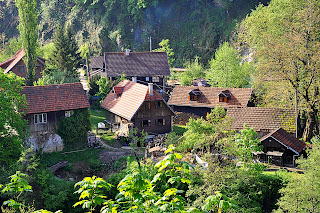Personally, the trip to Plitvice is the highlight of this journey. I have always wanted to see Lake Plitvice for many years. During the 1991-1995 war, the area became inaccessible but just about a decade after the war, the country becomes a popular tourist destination once again and picturesque photos of Plitvice splash all over the internet alluring me.
Mirano appeared at our hotel for the arranged pick-up to Plitvice. We were lucky to be driven by him. Not only he speaks English very well but to hear the history, economy, culture, war and everything about Croatia from a well-articulated Croatian is a blessing. “Croatia has a very small population…a bit more than 4 million” Mirano told us. “The majority is Croats, some Serbs and less than 1 million Bosniaks (Muslims)” he continued. Once we get out of Zagreb, it is quiet visible that Croatia is not densely populated.
We passed a town which was once heavily attacked by the Serbs during the war. Almost the whole town was destroyed and rebuilt. Mirano showed us houses full of bullets marks on their walls. “It must be a painful memory” I commented. “Well, we try not to think too much of it” he said and “life goes on” he added. The fact that the bullet marks on the walls of houses in the village were left there even they were rebuilt clearly tell us that every dent speaks for itself!
Suddenly, Mirano shifted our conversation on Rastoke. He said that tourists always by-pass this little village, Slunj, on the way to Plitvice. It is such a beautiful place and he proposed that we walked from the main road, down to the village crossing the wooden bridge. Trusting he knows his country well, we gladly accepted his suggestion for a detour.

How true, we found Slunj so beautifully charming, green and refreshing. Set on the river Slunjcica, the river branches forming waterfall flowing into the Korana River. We walked towards a few houses on the river and visited the old little corn mill operating with the water power. The warm and hospitable villagers offered us some corn bread and as I peeked into their garden surrounded by water, I imagined this beautiful place can be dangerous J. On a much higher and firmer ground of the village, there are accommodations available and I think a one night stay here can be exciting.


